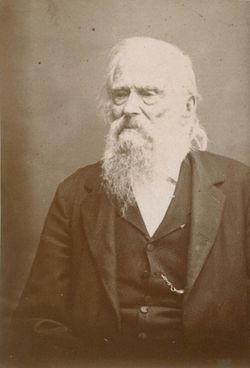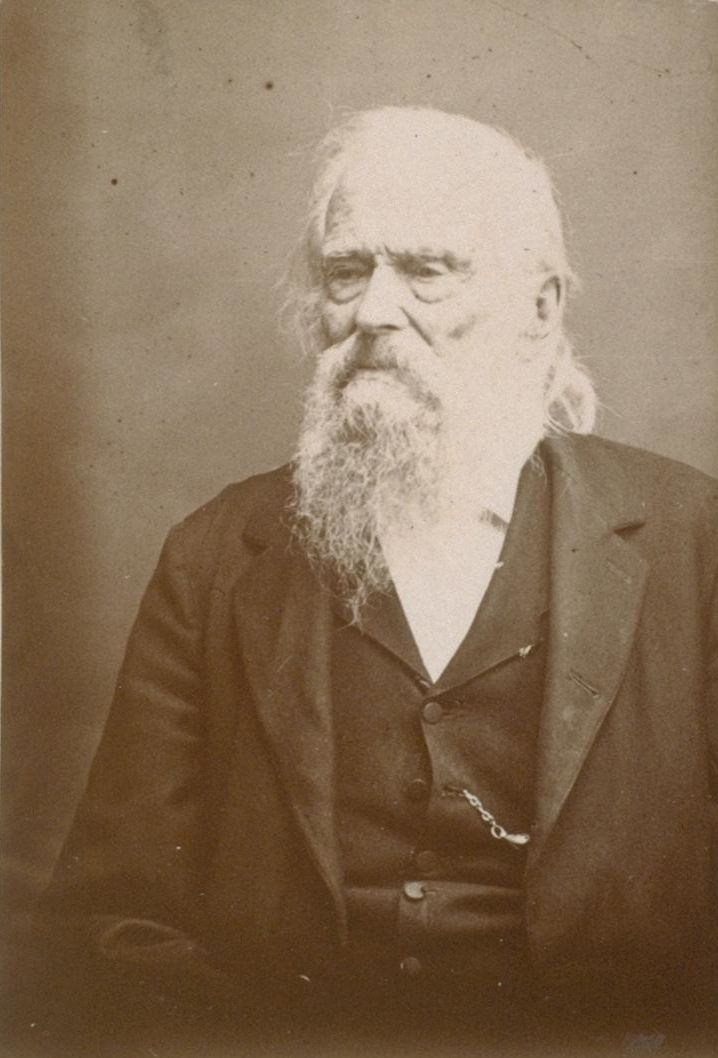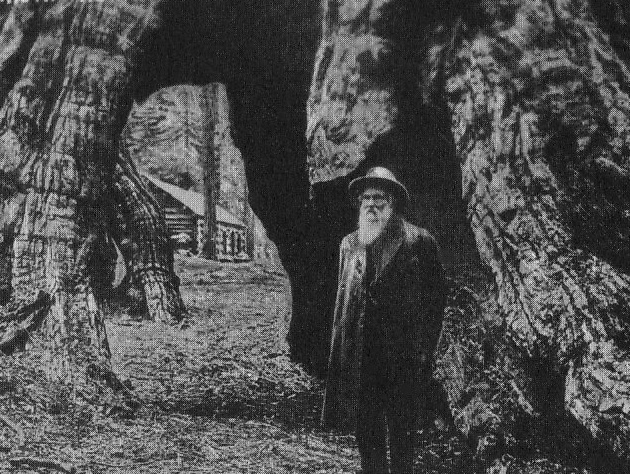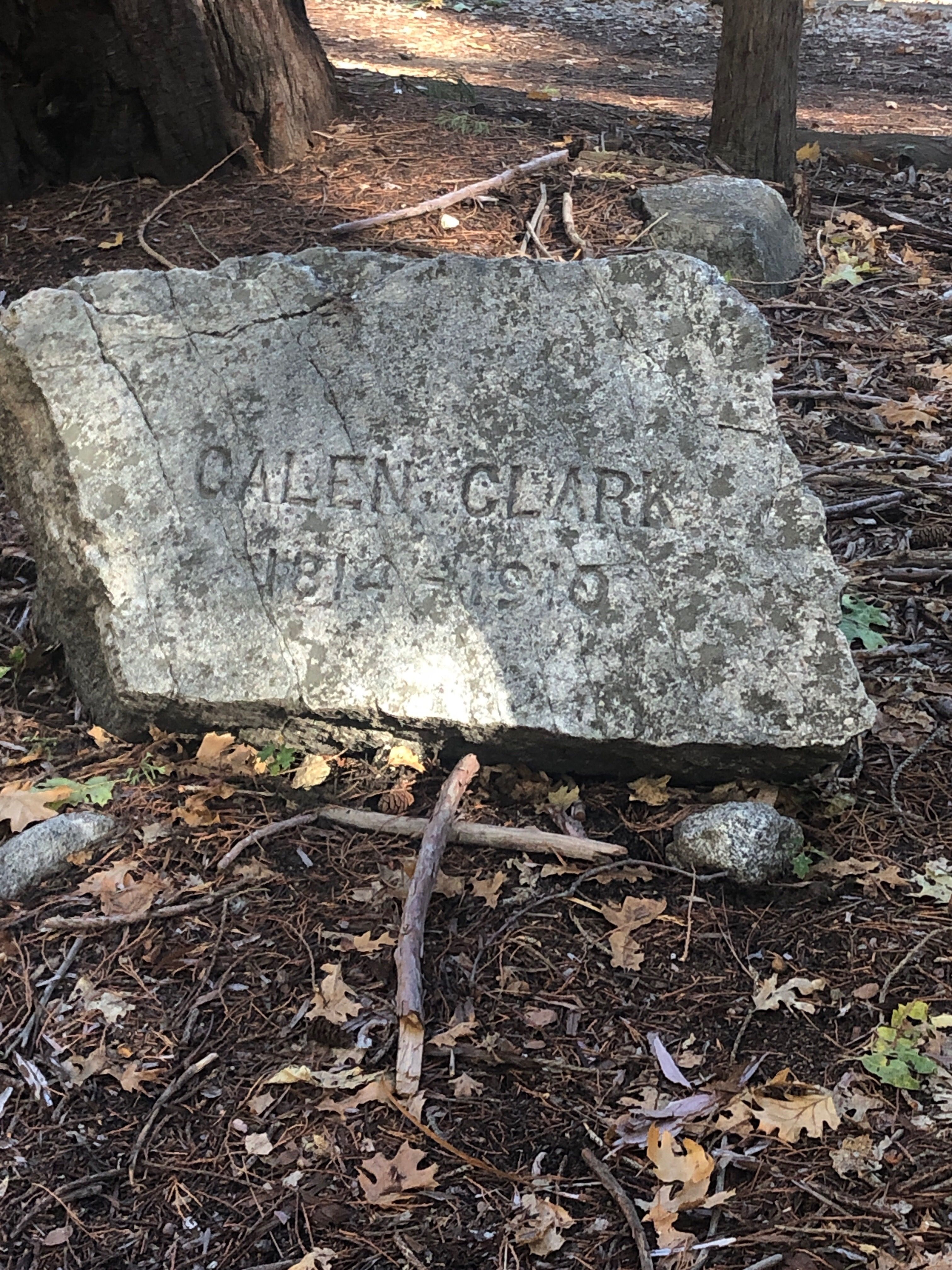The "Grrand Old Man" of Yosemite is Dead
Galen Clarke, the discoverer of the Mariposa grove of big trees and for twenty years guardian of Yosemite Valley, died Thursday night at the home of his daughter, Dr Elvira Lee, In Oakland. He was 96 years of age. Clarke's death was sudden and unexpected. He had been confined to his room for a day or two by a cold and tonight his daughter found him dead in bed.
Clarke was an intimate friend of Joseph Le Conte, John Muir and John Burroughs. During the twenty years that he served as State guardian of Yosemite Valley, the first to enter it in the spring and the last to leave in the fall, he met many of the notable persons who visited the valley, among them ex-President Roosevelt.
Clarke was born in New Hampshire in 1814 and came to California in 1853. He discovered the giant sequoias in 1857 while hunting. He was the author of a book on the Big Trees and several other works dealing with the early history of California. The aged guardian of the Yosemite will sleep in his valley within a stone's throw of Yosemite Falls, where he will be buried.
Besides Lee, Clarke leaves another daughter, Mrs James Regan, who lives in Springfield, Mass. - Fresno Republican
Published in the Merced Express, 26 Mar 1910, page 3
From nps.gov:
Born in Shipton, Canada East (now Quebec) in 1814, Clark developed a passion for Yosemite when he first visited the area in 1855 as part of a 17-member pioneer tourist party. After suffering a lung hemorrhage and quitting his job as a packer at the Mariposa Ditch Company, he decided to either find a cure or end his days in the mountain air. Settling at the meadowlands of Wawona in 1857, Clark built a log cabin near a river ford and trail that provided access to both the Mariposa Grove of Big Trees and Yosemite Valley. The road from Wawona-an Indian word believed to mean big tree-was considered the most scenic since it included the famed view of old Inspiration Point. Clark's rest stop, soon known as Clark's Station, furnished visitors with meals, shelter, and a place to graze their horses. There, Clark engaged his guests on a variety of topics from fauna and flora to American Indian history and geology.
Within five years, Clark ascended to a critical role in the development of what would eventually become Yosemite National Park. In 1864, President Abraham Lincoln signed the Act of Congress transferring Yosemite Valley and the Mariposa Grove to the State of California as a grant reserved from settlement. Terms of the act required that the "State shall accept the Grant upon the express conditions that the premises shall be held for public use, resort and recreation; [and] shall be inalienable for all time." The grant was locally administered by a guardian representing an eight-man board of commissioners. Their first choice for the new position was Galen Clark. Throughout the next 24 years, commissioners came and went but the popular and effective Clark was retained as guardian.
However, as an entrepreneur he proved to be less successful. To keep his stage stop at Wawona afloat he was compelled to borrow money and take out a mortgage. Unable to clear the debt, he sold out to the road-building Washburn brothers in 1874. The site was eventually developed into the Wawona Hotel complex that continues to serve Yosemite visitors today.
Despite failing as a businessman, Clark never lost his reputation for hospitality and generosity to weary travelers. "He kindly furnished us with flour and a little sugar and tea, and my companion, who complained of the be-numbing poverty of a strictly vegetarian diet, gladly accepted Mr. Clark's offer of a piece of bear that had just been killed," wrote John Muir in The Yosemite.
Muir met Clark at his Wawona ranch during the legendary botanist's first visit to Yosemite. Over the years, the two outdoorsmen made many wilderness sojourns together in which Clark scrambled through thick chaparral brush in the easiest way. On one 1872 trip, Clark helped set stakes in an ice field on the slopes of Mount Maclure as part of Muir's glacial research. Deemed the best mountaineer that Muir ever met, Clark sought few comforts when outdoors. He was even rather careless about selecting a bed for the night. "He would lie down anywhere on any ground, rough or smooth, without taking pains even to remove cobbles or sharp-angled rocks protruding through the grass or gravel," Muir wrote.
Clark accompanied Ralph Waldo Emerson, along with Muir, during the poet's 1871 visit to the Mariposa Grove. Clark proudly pointed out a lower branch on the Grizzly Giant that was 6 feet, 7 inches in diameter—as big as the base of any tree trunk Emerson might see in New England. Emerson was given permission to name a sequoia, which he called the Samoset Tree, after the first American Indian to contact the Pilgrims. Another sequoia was named after Clark. Reportedly, it was the first Big Tree seen by him when he entered the Mariposa Grove in 1857.
In 1880, changes in state politics temporarily ended Clark's guardianship. A new state constitution brought in a new board of commissioners who promptly replaced him with James Hutchings. After nine tumultuous years and three guardian failures, 75-year-old Clark was reappointed to his old post in 1889. Finally, in 1897, conceding that a younger man was needed for the job, he "retired"; however, even in retirement Clark kept busy in Yosemite working as a tourist camp manager and guide.
On March 24, 1910, a few days before his 96th birthday, Clark died at his daughter's home in Oakland, California. Decades earlier he had chosen his final resting place not far from Yosemite Falls. He dug his own grave, planted seedling sequoias from the Mariposa Grove sequoias and selected a granite marker. Today, visitors can stand at Galen Clark's gravesite in the Valley Cemetery and marvel at the growth of those sequoias amidst the expanse of his conservation efforts.
The "Grrand Old Man" of Yosemite is Dead
Galen Clarke, the discoverer of the Mariposa grove of big trees and for twenty years guardian of Yosemite Valley, died Thursday night at the home of his daughter, Dr Elvira Lee, In Oakland. He was 96 years of age. Clarke's death was sudden and unexpected. He had been confined to his room for a day or two by a cold and tonight his daughter found him dead in bed.
Clarke was an intimate friend of Joseph Le Conte, John Muir and John Burroughs. During the twenty years that he served as State guardian of Yosemite Valley, the first to enter it in the spring and the last to leave in the fall, he met many of the notable persons who visited the valley, among them ex-President Roosevelt.
Clarke was born in New Hampshire in 1814 and came to California in 1853. He discovered the giant sequoias in 1857 while hunting. He was the author of a book on the Big Trees and several other works dealing with the early history of California. The aged guardian of the Yosemite will sleep in his valley within a stone's throw of Yosemite Falls, where he will be buried.
Besides Lee, Clarke leaves another daughter, Mrs James Regan, who lives in Springfield, Mass. - Fresno Republican
Published in the Merced Express, 26 Mar 1910, page 3
From nps.gov:
Born in Shipton, Canada East (now Quebec) in 1814, Clark developed a passion for Yosemite when he first visited the area in 1855 as part of a 17-member pioneer tourist party. After suffering a lung hemorrhage and quitting his job as a packer at the Mariposa Ditch Company, he decided to either find a cure or end his days in the mountain air. Settling at the meadowlands of Wawona in 1857, Clark built a log cabin near a river ford and trail that provided access to both the Mariposa Grove of Big Trees and Yosemite Valley. The road from Wawona-an Indian word believed to mean big tree-was considered the most scenic since it included the famed view of old Inspiration Point. Clark's rest stop, soon known as Clark's Station, furnished visitors with meals, shelter, and a place to graze their horses. There, Clark engaged his guests on a variety of topics from fauna and flora to American Indian history and geology.
Within five years, Clark ascended to a critical role in the development of what would eventually become Yosemite National Park. In 1864, President Abraham Lincoln signed the Act of Congress transferring Yosemite Valley and the Mariposa Grove to the State of California as a grant reserved from settlement. Terms of the act required that the "State shall accept the Grant upon the express conditions that the premises shall be held for public use, resort and recreation; [and] shall be inalienable for all time." The grant was locally administered by a guardian representing an eight-man board of commissioners. Their first choice for the new position was Galen Clark. Throughout the next 24 years, commissioners came and went but the popular and effective Clark was retained as guardian.
However, as an entrepreneur he proved to be less successful. To keep his stage stop at Wawona afloat he was compelled to borrow money and take out a mortgage. Unable to clear the debt, he sold out to the road-building Washburn brothers in 1874. The site was eventually developed into the Wawona Hotel complex that continues to serve Yosemite visitors today.
Despite failing as a businessman, Clark never lost his reputation for hospitality and generosity to weary travelers. "He kindly furnished us with flour and a little sugar and tea, and my companion, who complained of the be-numbing poverty of a strictly vegetarian diet, gladly accepted Mr. Clark's offer of a piece of bear that had just been killed," wrote John Muir in The Yosemite.
Muir met Clark at his Wawona ranch during the legendary botanist's first visit to Yosemite. Over the years, the two outdoorsmen made many wilderness sojourns together in which Clark scrambled through thick chaparral brush in the easiest way. On one 1872 trip, Clark helped set stakes in an ice field on the slopes of Mount Maclure as part of Muir's glacial research. Deemed the best mountaineer that Muir ever met, Clark sought few comforts when outdoors. He was even rather careless about selecting a bed for the night. "He would lie down anywhere on any ground, rough or smooth, without taking pains even to remove cobbles or sharp-angled rocks protruding through the grass or gravel," Muir wrote.
Clark accompanied Ralph Waldo Emerson, along with Muir, during the poet's 1871 visit to the Mariposa Grove. Clark proudly pointed out a lower branch on the Grizzly Giant that was 6 feet, 7 inches in diameter—as big as the base of any tree trunk Emerson might see in New England. Emerson was given permission to name a sequoia, which he called the Samoset Tree, after the first American Indian to contact the Pilgrims. Another sequoia was named after Clark. Reportedly, it was the first Big Tree seen by him when he entered the Mariposa Grove in 1857.
In 1880, changes in state politics temporarily ended Clark's guardianship. A new state constitution brought in a new board of commissioners who promptly replaced him with James Hutchings. After nine tumultuous years and three guardian failures, 75-year-old Clark was reappointed to his old post in 1889. Finally, in 1897, conceding that a younger man was needed for the job, he "retired"; however, even in retirement Clark kept busy in Yosemite working as a tourist camp manager and guide.
On March 24, 1910, a few days before his 96th birthday, Clark died at his daughter's home in Oakland, California. Decades earlier he had chosen his final resting place not far from Yosemite Falls. He dug his own grave, planted seedling sequoias from the Mariposa Grove sequoias and selected a granite marker. Today, visitors can stand at Galen Clark's gravesite in the Valley Cemetery and marvel at the growth of those sequoias amidst the expanse of his conservation efforts.
Bio by: Alan Lopez
Family Members
Advertisement
See more Clark memorials in:
Explore more
Sponsored by Ancestry
Advertisement


















